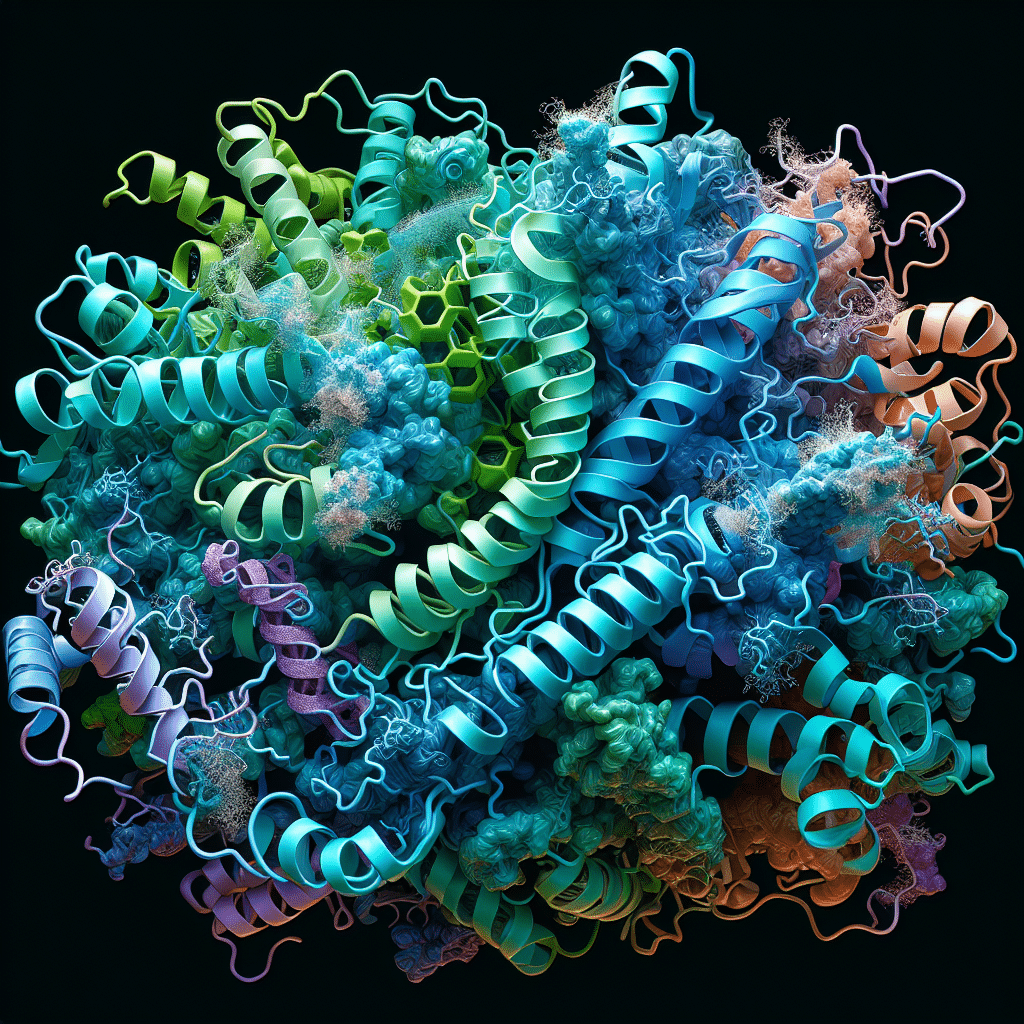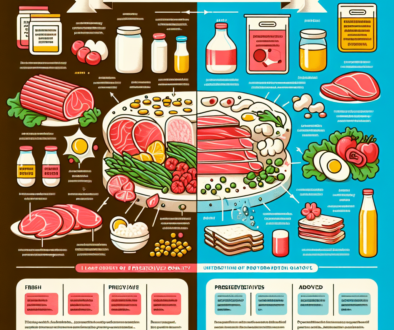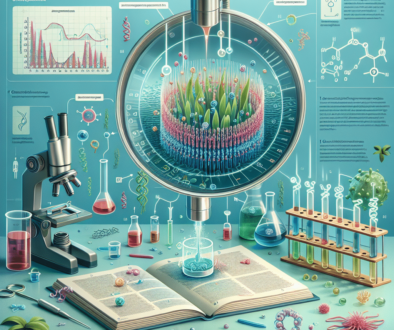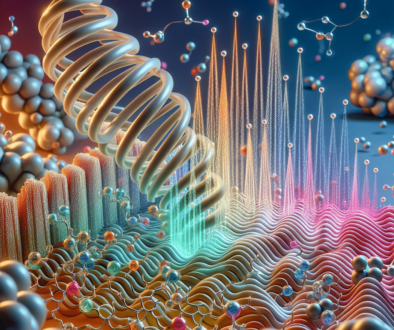Protein Structure: Unveiling the Blueprint of Life
-
Table of Contents
- Protein Structure: The Architectural Wonders of Biological Molecules
- The Fundamentals of Protein Structure
- Protein Folding: A Journey to Functional Configuration
- Techniques for Unraveling Protein Structures
- Protein Structure and Function: An Inseparable Pair
- Case Studies: Protein Structure in Action
- Protein Misfolding and Disease
- Conclusion: The Significance of Protein Structure
- Discover High-Quality Proteins with ETprotein
Protein Structure: The Architectural Wonders of Biological Molecules

Proteins are the workhorses of life, performing a vast array of functions essential for the survival and thriving of organisms. From catalyzing metabolic reactions to providing structural support, proteins are indispensable. Understanding their structure is akin to deciphering the blueprint of life, revealing how the intricate folding and shaping of these molecules dictate their diverse roles. This article delves into the fascinating world of protein structure, exploring its complexity and significance in biological systems.
The Fundamentals of Protein Structure
At the most basic level, proteins are polymers of amino acids linked together by peptide bonds in a linear chain. This chain folds into a three-dimensional structure that determines the protein’s function. The structure of proteins can be categorized into four levels:
- Primary Structure: The sequence of amino acids in the polypeptide chain.
- Secondary Structure: Local folding patterns such as alpha-helices and beta-sheets, stabilized by hydrogen bonds.
- Tertiary Structure: The overall three-dimensional shape of a single polypeptide chain, formed by interactions between side chains.
- Quaternary Structure: The arrangement of multiple polypeptide subunits in a multi-subunit complex.
Each level of structure is critical for the protein’s stability and function. Disruptions at any level can lead to loss of function or diseases such as Alzheimer’s, where protein misfolding plays a key role.
Protein Folding: A Journey to Functional Configuration
Protein folding is a highly regulated process that transforms the linear sequence of amino acids into a functional three-dimensional structure. This process is guided by the protein’s primary structure and influenced by the cellular environment. Chaperone proteins assist in the folding process, ensuring that proteins reach their correct shape and preventing aggregation.
Techniques for Unraveling Protein Structures
Scientists use various techniques to determine protein structures, each with its own strengths and limitations:
- X-ray Crystallography: A technique that involves crystallizing the protein and diffracting X-rays through the crystal to determine the electron density map.
- Nuclear Magnetic Resonance (NMR) Spectroscopy: A method that uses the magnetic properties of atoms to determine the structure of proteins in solution.
- Cryo-Electron Microscopy (Cryo-EM): A technique that involves flash-freezing protein samples and imaging them with an electron microscope to reconstruct the structure.
These techniques have revolutionized our understanding of protein structures and have been instrumental in drug design and biotechnology.
Protein Structure and Function: An Inseparable Pair
The function of a protein is intimately linked to its structure. Enzymes, for example, have active sites perfectly shaped to bind specific substrates and catalyze reactions. Structural proteins like collagen provide mechanical support to tissues, while transport proteins such as hemoglobin carry oxygen in the blood. The diversity of protein functions is a direct consequence of the versatility of their structures.
Case Studies: Protein Structure in Action
Several case studies highlight the importance of protein structure in understanding biological processes and developing therapeutics:
- Hemoglobin: The study of hemoglobin’s quaternary structure has shed light on how oxygen binding triggers conformational changes that enhance oxygen uptake and release.
- HIV Protease Inhibitors: Knowledge of the HIV protease structure has led to the development of drugs that inhibit the enzyme, a crucial step in the viral life cycle.
- CRISPR-Cas9: Understanding the structure of the Cas9 protein has been pivotal in harnessing CRISPR for genome editing applications.
These examples underscore the power of structural biology in advancing our understanding of life and improving human health.
Protein Misfolding and Disease
Protein misfolding can lead to the formation of dysfunctional or toxic species, contributing to various diseases. Alzheimer’s disease, Parkinson’s disease, and prion diseases are all associated with the accumulation of misfolded proteins. Research into the mechanisms of protein misfolding and aggregation is crucial for developing therapeutic strategies to combat these conditions.
Conclusion: The Significance of Protein Structure
Protein structure is a fundamental aspect of molecular biology that provides insights into the function and regulation of these vital molecules. The study of protein structure has profound implications for medicine, biotechnology, and understanding the very essence of life. As research continues to unveil the secrets of protein folding and structure, we can expect to see continued advancements in our ability to manipulate and harness proteins for the benefit of humanity.
Discover High-Quality Proteins with ETprotein
If you’re in search of premium protein products, ETprotein offers an extensive range of organic and plant-based proteins that cater to various industries. Their commitment to quality, non-GMO, and allergen-free products ensures that you receive the best ingredients for your nutraceutical, pharmaceutical, or food and beverage applications. Contact ETprotein to explore their offerings and enhance your products with superior protein ingredients.
About ETprotein:
ETprotein, a reputable protein Chinese factory manufacturer and supplier, is renowned for producing, stocking, exporting, and delivering the highest quality organic bulk vegan protein and plant proteins. They include Organic rice protein, clear rice protein, pea protein, clear pea protein, pumpkin seed protein, sunflower seed protein, mung bean protein, peanut protein etc. Their offerings, characterized by a neutral taste, non-GMO, allergen-free attributes, cater to a diverse range of industries. They serve nutraceutical, pharmaceutical, cosmeceutical, veterinary, as well as food and beverage finished product distributors, traders, and manufacturers across Europe, USA, Canada, Australia, Thailand, Japan, Korea, Brazil, and Chile, among others.
ETprotein specialization includes exporting and delivering tailor-made protein powder and finished nutritional supplements. Their extensive product range covers sectors like Food and Beverage, Sports Nutrition, Weight Management, Dietary Supplements, Health and Wellness Products, and Infant Formula, ensuring comprehensive solutions to meet all your protein needs.
As a trusted company by leading global food and beverage brands and Fortune 500 companies, ETprotein reinforces China’s reputation in the global arena. For more information or to sample their products, please contact them and email sales(at)ETprotein.com today.














